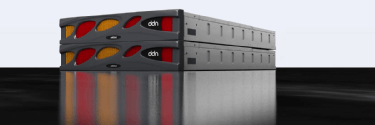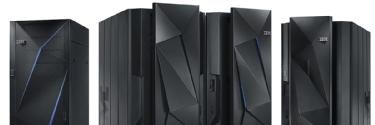Software-defined storage
Software-defined storage allows customers to build shared storage with storage software that provides SAN and NAS capability, including in some cases with full enterprise features such as replication, snapshots, integration with virtualisation platforms, tiered storage and flash drives. Software-defined storage products allow customers to build shared pools of storage from commodity servers, existing storage array capacity or unused direct-attached storage.
-
Podcast
22 Oct 2025

Podcast: SSD for high performance, but HDD suits ‘warm’ workloads
We talk to Axel Stoermann of drive maker Kioxia about the efficiencies and performance that flash storage can bring, but why hard disk drives are still a key choice in some use cases Continue Reading
By- Antony Adshead, Computer Weekly
-
News
22 Oct 2025

Container storage: Five key things you need to know
We look at container storage and backup, diving deep into how storage works in containers, container storage interface, container-native storage, and the management platforms storage suppliers offer Continue Reading
By- Antony Adshead, Computer Weekly
-
News
30 Sep 2025

Infinidat doubles InfiniBox Hybrid array capacity
Enterprise array maker boosts capacity by two times to 33PB, promises high-density QLC flash drives in the fourth quarter, and adds native object storage that can be set up as customers configure volumes Continue Reading
By- Antony Adshead, Computer Weekly
-
News
30 Sep 2025

Cloudian launches object storage AI platform at corporate LLM
Object storage specialist teams up with Nvidia to provide RAG-based chatbot capability for organisations that want to mine in-house information in an air-gapped large language model Continue Reading
By- Antony Adshead, Computer Weekly
-
News
23 Sep 2025

Podcast: How to get value from unstructured data
In this podcast, we talk to Nasuni founder and CTO Andres Rodriguez about the obstacles to getting the most value from enterprise unstructured data, especially via metadata Continue Reading
By- Antony Adshead, Computer Weekly
-
News
16 Sep 2025

eEVOS brings GUI-accessible VMware alternative for SMEs
eEVOS from EuroNAS plays in the same space as ProxMox, but isn’t free. It does, however, offer a graphical UI so customers don’t need to flex the Linux CLI skills to use it Continue Reading
By- Yann Serra, LeMagIT
-
Feature
15 Aug 2025

Lenovo partners its way up the storage maker rankings
Storage profile: We look at Lenovo, a key storage player that has played the partnership game to rise in the array maker rankings and corner the SME and entry-level market Continue Reading
By- Antony Adshead, Computer Weekly
-
Feature
29 Jul 2025

M&A data storage integration challenges and how to tackle them
The need for efficiencies after mergers and acquisitions affects all IT operations. But data storage also raises issues around security, privacy and the reuse of data Continue Reading
-
News
02 Jul 2025

DDN targets enterprise-shaped hole in its AI storage offer
Specialist in AI and HPC storage DDN has oriented towards higher performance array products more suited to the enterprise as it aims at $1bn in turnover for 2025 Continue Reading
By- Stéphane Larcher, LeMagIT
- Yann Serra, LeMagIT
- Antony Adshead, Computer Weekly
-
Feature
01 Jul 2025

NetApp: Not just NAS filers, and a comprehensive cloud strategy
NetApp market share has slipped, but it has built out storage across file, block and object, plus capex purchasing, Kubernetes storage management and hybrid cloud Continue Reading
By- Antony Adshead, Computer Weekly
-
Podcast
26 Jun 2025

Pure CTO drills down on key-value, no DFMs on FA//ST, and fast object
In this podcast, we talk to Pure Storage CTO Rob Lee about use of key-value stores in its storage OS, plus why its much-vaunted DirectFlash isn’t in the new FlashArray//ST product Continue Reading
By- Antony Adshead, Computer Weekly
-
News
23 Jun 2025

Interview: Rolf Krolke, regional technology director, The Access Group
We talk to The Access Group’s technology director for APAC about integration and ongoing management of legacy systems in an extremely acquisitive company, and the worldwide storage refresh he’s overseeing as part of that process Continue Reading
By- Antony Adshead, Computer Weekly
-
Feature
10 Jun 2025

IBM reorients storage to cloud, containers and as-a-service
Storage profile: We look at Big Blue’s storage offer, which spans file, block and object, on-premise, in the cloud, and mainframes, while also embracing containers and the cloud Continue Reading
By- Antony Adshead, Computer Weekly
-
News
21 May 2025

Vast Data launches into AI stratosphere with AgentEngine
Vast has built out into data management from its roots and will now offer customisable agentic AI agents that can tap into its existing storage, database and messaging capabilities Continue Reading
By- Antony Adshead, Computer Weekly
-
Feature
14 May 2025

Roundtable: Why did customers sail away from VMware?
At Nutanix’s recent .Next event in the US, customers talked about why they migrated away from VMware and the pain points that accelerated their decision to switch hypervisor Continue Reading
By- Antony Adshead, Computer Weekly
-
News
08 May 2025

Nutanix opens up to all external storage
CEO Rajiv Ramaswami says Nutanix will open its platform to all external storage, allowing it to profit from customers wanting to move away from VMware, as well as the hyper-converged curious Continue Reading
By- Antony Adshead, Computer Weekly
-
News
07 May 2025

Nutanix escapes the datacentre with Cloud Native AOS
Hyper-converged infrastructure provider offers its operating system independently of a hypervisor to allow containerised apps to run at the edge or on Kubernetes runtimes in the Amazon cloud Continue Reading
By- Antony Adshead, Computer Weekly
-
Feature
23 Apr 2025

Hitachi Vantara: VSP One leads revamped storage portfolio
Storage supplier profile: Block, file and object as part of full-stack IT offer for hybrid cloud and containerised applications comes via VSP One arrays and EverFlex as-a-service options Continue Reading
By- Antony Adshead, Computer Weekly
-
Feature
19 Mar 2025

HPE storage battles hard and smart in challenging market
Storage profile: We look at HPE, which has slipped in the storage supplier rankings, but brings a full range of AI-era storage over a mature cloud and consumption model offer Continue Reading
By- Antony Adshead, Computer Weekly
-
Feature
05 Mar 2025

Dell still tops the pile as it deepens enterprise storage offer
The US giant is top dog in revenue and market share as its storage array range – still largely EMC-derived – deepens its cloud, containers and as-a-service options Continue Reading
By- Antony Adshead, Computer Weekly
-
Feature
26 Feb 2025

VMware vSAN Max: What you need to know
We look at VMware vSAN Max storage – its best use cases, how to deploy it and on what hardware, the alternatives, and considerations in light of VMware’s Broadcom takeover Continue Reading
-
Podcast
04 Feb 2025

Podcast: AI to boost drive innovation in 2025
We talk to Jason Feist of Seagate about artificial intelligence and how it is driving drive innovation, the growth of data and how sustainability and energy efficiency is vital to meeting capacity needs Continue Reading
By- Antony Adshead, Computer Weekly
-
News
18 Dec 2024

Top 10 Kubernetes and storage stories of 2024
In this 2024 review, Computer Weekly looks at Kubernetes’ evolution from stateless application runtime to enterprise-ready environment for cloud-native with persistent storage and data protection Continue Reading
By- Antony Adshead, Computer Weekly
-
News
25 Nov 2024

Gambling cloud provider bets on Nutanix and cools on VMware
Continent 8 consolidates infrastructure for cloud services and backs Nutanix as it gains influence over product roadmap and cools on VMware amid customer dissatisfaction over licence changes Continue Reading
By- Antony Adshead, Computer Weekly
-
Feature
14 Nov 2024

Storage technology explained: What is S3 and what is it good for?
We look at S3, AWS’s object storage protocol that originated in its cloud services and has now spread as near enough a standard and to third-party on-premise deployments Continue Reading
By- Antony Adshead, Computer Weekly
-
News
12 Nov 2024

Pure Storage CTO: How AI is changing storage demands
Pure Storage’s CTO stresses the need for adaptable IT systems to support AI workloads, advocating for open architectures and flexible storage platforms to avoid supplier lock-in Continue Reading
By- Aaron Tan, Informa TechTarget
-
News
30 Oct 2024

Scality Ring XP to offer object storage at scale with rapid access
Lightweight S3 API trades storage features for microsecond access. Scality pairs it with all-NVMe flash in Ring XP, aimed at AI use cases for small object data in PB-scale datasets Continue Reading
By- Antony Adshead, Computer Weekly
-
Feature
11 Oct 2024

Global file systems: A single view of on-premise and cloud data
Global file systems aggregate data into a single hybrid cloud from multiple locations using object storage with access that satisfies traditional application needs, like file locking Continue Reading
-
News
26 Sep 2024

Auckland museum enhances digitisation efforts with storage upgrade
A major storage upgrade is enabling the Auckland War Memorial Museum to safeguard its vast collection, ensure digital sovereignty and enhance visitor experiences using AI Continue Reading
-
News
21 Aug 2024

QiStor flashes key-value storage software for hardware acceleration
US-based startup will develop storage software allied with FPGA chips to allow data storage to bypass spinning disk era block addressing to speed performance and cut energy use Continue Reading
By- Antony Adshead, Computer Weekly
-
Podcast
13 Aug 2024

Podcast: Storage functionality in Kubernetes 1.31
We talk to Sergey Pronin of Percona about new storage functionality in Kubernetes 1.31, including volume attribute class and changes to persistent volumes, as well as other long-term fixes Continue Reading
By- Antony Adshead, Computer Weekly
-
Feature
09 Aug 2024

Kubernetes and storage in the enterprise: What the analysts say
We talk to analysts about Kubernetes adoption in the enterprise, how mature it is, deployment challenges and key obstacles to enterprises that want to go cloud-native with containers Continue Reading
-
Feature
09 Aug 2024

Kubernetes at 10: CRDs at core of extensible, modular storage in K8s
We talk to VMware engineer Xing Yang, who saw Kubernetes storage evolve from the early days where its modular, extensible origins translated to Operators for storage and backup Continue Reading
By- Antony Adshead, Computer Weekly
-
Feature
25 Jul 2024

Kubernetes at 10: The long road to mastery of persistent storage
Jan Safranek of Red Hat saw containers emerge as an exciting new way of deploying applications, but it took several additions to make it the mature enterprise platform it is today Continue Reading
By- Antony Adshead, Computer Weekly
-
Feature
18 Jul 2024

Kubernetes at 10: From stateless also-ran to ‘platform to build platforms’
Sergey Pronin of Percona was all for ‘Kubernetes for stateless’ at a time when it was hard to provision storage and day-two services – then Operators and Stateful Sets came along Continue Reading
By- Antony Adshead, Computer Weekly
-
Feature
11 Jul 2024

Kubernetes at 10: When K8s ‘won’ and life now as a ‘surly teenager’
We talk to Datastax’s Patrick McFadin about Kubernetes’ success against competitors and how StatefulSet and operators solved key challenges, but why there are still obstacles to clear Continue Reading
By- Antony Adshead, Computer Weekly
-
Feature
25 Jun 2024

Kubernetes at 10: Building stateful app storage and data protection
Google engineer Michelle Au was involved in Kubernetes storage early, as the container orchestration platform was developed to support data protection operations such as snapshots Continue Reading
By- Antony Adshead, Computer Weekly
-
News
19 Jun 2024

Pure CEO: AI needs write speed and storage in place
We spoke to Pure Storage CEO Charlie Giancarlo about why write speed is key for artificial intelligence workloads, accessible storage for AI data, and his prediction of the death of spinning disk Continue Reading
By- Antony Adshead, Computer Weekly
-
News
19 Jun 2024

Pure deepens Fusion as reorientation to storage for AI continues
Pure Storage launches Fusion ‘storage classes’ across its arrays as a pool of storage for AI-centric workloads, plus AI Copilot and Evergreen//One for AI storage-as-a-service Continue Reading
By- Antony Adshead, Computer Weekly
-
News
30 May 2024

CMA slammed for excluding public sector from UK cloud market antitrust user research
The Competition and Markets Authority is under fire for instructing the firm overseeing the user research part of its antitrust probe into the UK cloud infrastructure services market not to include public sector buyers Continue Reading
By- Caroline Donnelly, Senior Editor, UK
-
News
26 May 2024

Nutanix beefs up AHV hypervisor, doubles down on AI
Nutanix takes aim at VMware with enhancements to its AHV hypervisor along with tighter integrations with Nvidia and Hugging Face to simplify AI deployments Continue Reading
-
Feature
10 May 2024

Four key impacts of AI on data storage
We look at the key impacts of AI on data storage, including I/O and possible bottlenecks, how I/O differs across training and inference, plus data management and compliance concerns Continue Reading
-
News
07 May 2024

French MSP saves 30% on cloud costs as it deploys Cubbit
Cubbit’s distributed object storage turns on-site capacity into a sovereign and secure cloud. CloudReso.com uses it to supply its customers and save on fees from big cloud providers Continue Reading
By- Antony Adshead, Computer Weekly
-
News
30 Apr 2024

Arcitecta offers file and object storage with huge transfer rates
Australian startup offers single namespace file and object storage with rapid access via a metadata database that puts the right data in the right place according to recent use Continue Reading
By- Yann Serra, LeMagIT
- Antony Adshead, Computer Weekly
-
Podcast
28 Mar 2024

Podcast: What is distributed cloud storage and what are its benefits?
We talk to Enrico Signoretti of Cubbit about how distributed cloud allows customers to control their data in hybrid and multicloud storage and the workloads the company targets Continue Reading
By- Antony Adshead, Computer Weekly
-
News
26 Mar 2024

Alletra MP hardware changes see HPE orient arrays towards AI
HPE doubles controller nodes, boosts capacity with denser drives, cuts caches and builds in 100Gbps links to bring denser, faster storage aimed at all parts of the AI/ML pipeline Continue Reading
By- Yann Serra, LeMagIT
- Antony Adshead, Computer Weekly
-
News
26 Mar 2024

GTC 2024: Storage suppliers queue up to ride the Nvidia AI wave
Storage supplier announcements at Nvdia conference centre on infrastructure integration, tackling the GPU I/O bottleneck and AI hallucinations by running Nvidia NeMo and NIM microservices Continue Reading
By- Antony Adshead, Computer Weekly
-
News
25 Mar 2024

IBM enhances network IT automation capabilities with Pliant acquisition
Tech giant makes strategic purchase to further boost software networking capabilities, offering customers the tools to enable network infrastructure observability, connectivity, control and automation across hybrid cloud environments Continue Reading
By- Joe O’Halloran, Computer Weekly
-
News
20 Mar 2024

How Vast Data is simplifying data infrastructure
Vast Data CEO Renen Hallak explains how the company’s unified data platform that combines storage, database and compute capabilities into a single technology stack can improve the efficiency of analytics and artificial intelligence workloads Continue Reading
By- Aaron Tan, Informa TechTarget
-
News
19 Mar 2024

Vast targets AI checkpointing write performance with distributed RAID
AI checkpointing operations targeted by Vast Data as it touts QLC-based storage for AI workloads Continue Reading
By- Antony Adshead, Computer Weekly
-
News
12 Mar 2024

Hammerspace leverages smart metadata handling for AI/ML workloads
Software-defined storage maker separates metadata from files to provide view-from-anywhere file system visibility. It has now leveraged that for AI/ML workloads in Hyperscale NAS Continue Reading
By- Antony Adshead, Computer Weekly
-
News
26 Feb 2024

Storage and backup spend in 2024 targets risk and resilience
The TechTarget and ESG spending intentions survey finds big bias towards averting risk and building organisational resilience, but on-premise storage a significant planned outlay Continue Reading
By- Antony Adshead, Computer Weekly
-
News
21 Feb 2024

NasuniIQ brings visualisation of massive unstructured datasets
Global file system provider adds visualisation of massive distributed unstructured datasets to allow customers to analyse data usage and prepare clean training data for artificial intelligence Continue Reading
By- Antony Adshead, Computer Weekly
-
News
06 Feb 2024

Inside NetApp’s cloud and AI strategy
NetApp’s senior executives talk up the company’s efforts to support AI initiatives and deliver first-party storage services on public cloud platforms Continue Reading
By- Aaron Tan, Informa TechTarget
-
Feature
18 Jan 2024

Storage technology explained: Replication vs snapshots and backup
Are replication and snapshots the same? Can you replace backup with replication or snapshots? We look into the key planks of data protection strategy, including in cloud storage Continue Reading
By- Antony Adshead, Computer Weekly
-
News
17 Jan 2024

Data on Kubernetes Community aims at K8S storage scaling solution
DoKC works on community solutions for Kubernetes. It aims to develop storage scaling automation for the containerised platform outside the orbit of the big vendors Continue Reading
By- Antony Adshead, Computer Weekly
-
News
11 Jan 2024

QLC made gains but storage innovation focus was on software in 2023
Storage hardware innovation has taken a back seat – QLC flash excepted – as the big storage suppliers build around software-based variants and optimisation on modular product sets Continue Reading
By- Yann Serra, LeMagIT
- Antony Adshead, Computer Weekly
-
News
21 Dec 2023

Top 10 storage stories of 2023
In this 2023 review, we consider if flash will thrash disk, what the Toyota outage shows about capacity planning, how to achieve green storage, the backup and compliance risks of AI, the lowdown on DPUs, and more Continue Reading
By- Antony Adshead, Computer Weekly
-
News
21 Dec 2023

Top 10 storage supplier strategy stories of 2023
In 2023, we looked at the top storage suppliers, their market share and how they set themselves for a future of hybrid cloud, containerisation and consumption models of purchasing Continue Reading
By- Antony Adshead, Computer Weekly
-
Feature
21 Dec 2023

Storage suppliers’ market share and strategy 2023
We look at the top suppliers in data storage by market share and run the rule over their storage offer, strategies for hybrid cloud, containerisation and as-you-go purchasing Continue Reading
By- Antony Adshead, Computer Weekly
-
Feature
19 Dec 2023

On-prem vs cloud storage: Four decisions about data location
Hybrid cloud is now a reality. But how to decide what data goes where? We highlight four key decision points to evaluate whether data should be stored on-premise or in the cloud Continue Reading
-
News
11 Dec 2023

Panasas set for Mach.2 throughput with multi-actuator HDDs
Scale-out NAS maker claims to be the first enterprise array maker to use multi-actuator HDDs designed for hyperscaler architectures and which double throughput Continue Reading
By- Antony Adshead, Computer Weekly
-
Feature
11 Dec 2023

ERP’s storage requirements and options in the cloud
We look under the hood at enterprise resource planning and its databases, the storage needed to support ERP’s I/O requirements, block, file and object storage, and ERP in an era of hybrid cloud Continue Reading
-
Feature
05 Dec 2023

Dell EMC: Storage giant shifts gear to cloud operating models
Storage profile: We look at Dell EMC, the result of the biggest tech acquisition ever, and find a company well set for ubiquitous cloud operating models and as-a-service Continue Reading
By- Antony Adshead, Computer Weekly
-
News
24 Oct 2023

NetApp ‘unified storage’ adds new ASA block storage at Insight
Las Vegas event sees NetApp continue its evolution to hybrid cloud and data management player announce ASA C-series and Keystone and Kubernetes storage enhancements Continue Reading
By- Antony Adshead, Computer Weekly
-
News
23 Oct 2023

Dell updates PowerStore, PowerMax and PowerFlex storage
Dell storage upgrades include improved AIOps, lower energy usage, real-time HA failover, seamless hardware replacement, and enhancements to take advantage of DPU acceleration Continue Reading
By- Yann Serra, LeMagIT
- Antony Adshead, Computer Weekly
-
Feature
20 Oct 2023

NetApp: NAS pioneer well set for the cloud revolution
In this storage profile, we look at NetApp, which built a reputation in file access storage but seems to be set fair to navigate a future of hybrid cloud, cloud-native and containerisation Continue Reading
By- Antony Adshead, Computer Weekly
-
News
19 Oct 2023

Scality gets a jump with VMware Cloud Director integration
S3-compliant object storage specialist will use new OSIS integration with VMware’s cloud management tool to target service providers that want to deliver regional cloud offers Continue Reading
By- Antony Adshead, Computer Weekly
-
News
03 Oct 2023

How Pure Storage is supporting AI workloads
Pure Storage’s cloud-compatible and energy-efficient modular flash storage architecture is well-poised to address the data storage demands of artificial intelligence workloads Continue Reading
By- Aaron Tan, Informa TechTarget
-
E-Zine
03 Oct 2023

Where next for quantum computing?
In this week’s Computer Weekly, we talk to the head of Amazon’s Braket quantum computing services about how the technology is progressing. We go behind the scenes at an ethical hacker event to find out how bug bounty programmes work. And we analyse the offerings of the major players in software-defined storage. Read the issue now. Continue Reading
-
News
02 Oct 2023

Versity targets Exabyte volumes in data archiving
Versity builds archiving for Exabyte data volumes on tape and in object storage. It has built its own S3 and transitioned to a GPL licence for supercomputing archives Continue Reading
By- Pierre Berlemont
- Antony Adshead, Computer Weekly
-
Feature
26 Sep 2023

IBM reorients to offset historic storage hardware decline
Storage profile: We look at IBM and the strategic shifts it has made towards the cloud, cloud-native and as-a-service offerings that aim to reverse a long-term decline in revenues Continue Reading
By- Antony Adshead, Computer Weekly
-
News
26 Sep 2023

Kubernetes storage: It’s object or nothing for MinIO
SAN and NAS are finished in the age of the cloud when it comes to cloud-native Kubernetes storage, according to container-focused object storage maker MinIO Continue Reading
By- Pierre Berlemont
- Antony Adshead, Computer Weekly
-
News
05 Sep 2023

VMware builds vSAN Max, consolidates multicloud and online deployment
VMware launches new iteration of vSAN Max with up to 8.6PB of independently scalable storage, NSX gets a “+” as it unifies networks and Ransomware Recovery ups efficiency Continue Reading
By- Yann Serra, LeMagIT
- Antony Adshead, Computer Weekly
-
E-Zine
18 Aug 2023

CW APAC: Expert advice on storage and backup
In this handbook, focused on storage and backup in the Asia-Pacific region, Computer Weekly looks at why 3-2-1 backup is still relevant, how researchers are overcoming restraints found in typical DNA storage systems, Dell’s latest offerings and the future of HDDs Continue Reading
-
News
15 Aug 2023

Nutanix GPT-in-a-Box aims hyper-converged at AI/ML use cases
Nutanix targets a pre-configured bundle of AI/ML and GPT software with hyper-converged infrastructure and GPT to help organisations safely take advantage of learning networks Continue Reading
By- Antony Adshead, Computer Weekly
-
Feature
09 Aug 2023

Huawei a big storage hitter despite international troubles
Huawei is a leading storage player with an enterprise product offer across file, block and object storage, and the cloud, despite controversy and trading difficulties Continue Reading
By- Stephen Pritchard
- Antony Adshead, Computer Weekly
-
Podcast
08 Aug 2023

Podcast: File synchronisation benefits and use cases
If you’ve got the bandwidth and you need to share files or even synchronise virtual desktops, file synchronisation is worth a look. That’s the view of Peer Software CEO Jimmy Tan Continue Reading
By- Antony Adshead, Computer Weekly
-
News
07 Aug 2023

HPE’s Alletra MP marries storage to cloud and software-defined choices
HPE’s Alletra was launched in April with an architecture that ties in with GreenLake consumption purchasing, SaaS configuration and addition of software-defined storage services Continue Reading
By- Yann Serra, LeMagIT
- Antony Adshead, Computer Weekly
-
News
02 Aug 2023

Cubbit offers cut-price cloud with DS3 distributed storage
Cubbit’s DS3 offers cloud at up to 20% the cost of the main providers via on-premise software that builds a cloud with other users and targets unstructured data use cases such as backup Continue Reading
By- Antony Adshead, Computer Weekly
-
News
01 Aug 2023

Vast Data Platform aims at storage everywhere for AI/ML workloads
Vast Data to offer storage with data lake and warehouse functionality built in natively, in anticipation of a huge surge in AI/ML workloads and a need for ever-larger data stores Continue Reading
By- Antony Adshead, Computer Weekly
-
News
24 Jul 2023

CunoFS brings Posix file access to S3 object storage capacity
Developed out of data compression tools for genomics, PetaGene gateways allow application servers Posix-based file access to the deep data stores of S3 object capacity Continue Reading
By- Yann Serra, LeMagIT
- Antony Adshead, Computer Weekly
-
E-Zine
18 Jul 2023

Computer Weekly: Soaring ahead with data at Rolls-Royce
In this week’s Computer Weekly, we find out how aerospace giant Rolls-Royce is using data science, machine learning and internet of things to improve its competitive advantage. We examine the benefits and best practices in software-defined storage. And we analyse calls for a review of laws around the use of computer evidence prompted by the Post Office IT scandal. Read the issue now. Continue Reading
-
Feature
29 Jun 2023

Software-defined storage: What’s available from key players
What’s available in software-defined storage from the big storage players, software-defined storage specialists, and SDS options focused on cloud, virtualisation and containers Continue Reading
-
Feature
28 Jun 2023

Hitachi Vantara: Small part of a big corp and analytics focus
We look at Hitachi Vantara, its storage, its cloud offer, the workloads it targets, and its efforts in containerisation and consumption models of storage purchasing Continue Reading
By- Antony Adshead, Computer Weekly
-
Feature
06 Jun 2023

Software-defined storage: What it is and variants available
SDS is available in numerous variants. It is usually cheaper, flexible to deploy and brings storage efficiencies, but there are pitfalls in complexity, management and performance Continue Reading
-
News
16 May 2023

Gartner highlights four trends shaping enterprise cloud, edge and datacentre investments
Analyst lifts lid on how enterprise attitudes to cloud, datacentre and edge-related digital transformation projects are changing Continue Reading
By- Caroline Donnelly, Datacentre Editor
-
News
16 May 2023

Scality pushes anti-ransomware features in Artesca object storage
Object storage specialist announces v2.0 of Artesca, with a heavy focus on functionality that can protect against ransomware such as object locking, sharding, backup to object etc Continue Reading
By- Antony Adshead, Computer Weekly
-
News
25 Apr 2023

Veritas shows off software SAN for Kubernetes at KubeCON 2023
Veritas InfoScale aims to provide high-performance block access storage despite limitations such as a maximum node count of 16 per cluster Continue Reading
By- Yann Serra, LeMagIT
- Antony Adshead, Computer Weekly
-
News
18 Apr 2023

IT Priorities 2023: Cloud and disaster recovery top storage and backup plans
Cloud storage still the biggest project planned in data storage in 2023, with disaster recovery the most important area in data protection cited by TechTarget/Computer Weekly survey respondents Continue Reading
By- Antony Adshead, Computer Weekly
-
News
04 Apr 2023

HPE launches GreenLake for File and Block, and unified arrays
HPE upgrades its storage-as-a-service offer with Greenlake for File and for Block, configurable via the cloud but deployable on-prem. Meanwhile it shows new Alletra MP arrays Continue Reading
By- Antony Adshead, Computer Weekly
-
News
28 Mar 2023

IBM Storage launched with backup appliance plan
Prosaically named brand will replace Spectrum products, while IBM rationalises offer for AI/ML, hybrid cloud and malware, which it sees as the backdrop to contemporary IT Continue Reading
By- Yann Serra, LeMagIT
- Antony Adshead, Computer Weekly
-
E-Zine
21 Mar 2023

The risks of an imbalance in AI
In this week’s Computer Weekly, a leading AI expert explains the risks of an arms race in artificial intelligence caused by the domination of private sector providers. Our latest buyer’s guide examines ways to reduce IT’s energy use. And we analyse the latest damning revelations from the Post Office scandal inquiry. Read the issue now. Continue Reading
-
E-Zine
16 Mar 2023

CW APAC: Buyer’s guide to SASE
Appropriate networking and security functions are integral to cyber defence. In this handbook, focused on secure access service edge in the Asia-Pacific region, Computer Weekly looks at its key benefits, how cloud security firm Zscaler aims to improve, the dangers of advanced persistent threat groups and why Australian businesses are waking up to the importance of security investment. Continue Reading
-
News
09 Mar 2023

Velero wants to become the Kubernetes backup standard
Open source Velero offers modular data protection and disaster recovery functionality via API for Kubernetes container clusters in an effort to become the standard in the field Continue Reading
By- Yann Serra, LeMagIT
- Antony Adshead, Computer Weekly
-
News
05 Mar 2023

FlashBlade//E to open up new opportunities in Australia
Pure Storage’s FlashBlade//E will enable the storage supplier to target medical imaging and remote backup workloads and attract new customers in Australia Continue Reading
-
News
13 Feb 2023

Hycu aims at universal SaaS backup with R-Cloud
Hycu’s R-Cloud aims to provide an API-driven backup product for any software-as-a-service application for enterprise customers, based on a simple low-code development environment Continue Reading
By- Yann Serra, LeMagIT
- Antony Adshead, Computer Weekly
-
News
08 Feb 2023

Rakuten targets big edge deployments with Symworld Cloud
Japanese giant Rakuten bought Kubernetes management platform Robin.io and put it in 50,000-plus telco antennas. Now it aims Symworld Cloud at enterprise edge deployments Continue Reading
By- Yann Serra, LeMagIT
- Antony Adshead, Computer Weekly
-
Feature
07 Feb 2023

Container storage platforms: Big six approach starts to align
Container storage is a complex but vital task. We survey the big six storage makers and see methods are starting to align around management platforms Continue Reading
By- Antony Adshead, Computer Weekly
-
News
07 Feb 2023

NetApp adds QLC C-series, new A-series and subscription upgrades
NetApp C-series QLC-based array family offers flash speed with capacity, while Advance adds subscription upgrades to owned hardware, as well as a new entry-level A-series array Continue Reading
By- Antony Adshead, Computer Weekly
-
News
30 Jan 2023

Tiger’s hybrid cloud storage targets medical imaging
Tiger Bridge targets vertical sectors that find it hard to migrate to the cloud by allowing data storage in the cloud while using files locally as if stored on-premise Continue Reading
By- Antony Adshead, Computer Weekly
- Yann Serra, LeMagIT
-
Feature
25 Jan 2023

Green storage: Savings to be made but tricky to achieve
Storage upgrades can bring energy savings. New hardware, the cloud and as-a-service procurement models all cut costs, but can need careful tweaking to get right Continue Reading
By- Antony Adshead, Computer Weekly


